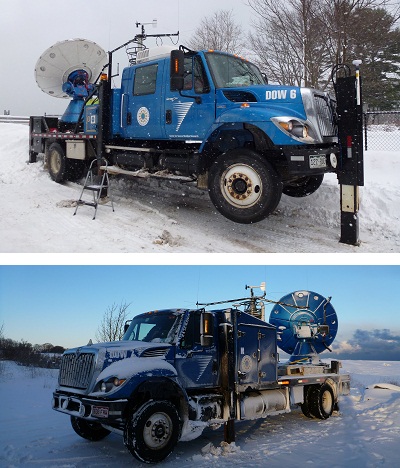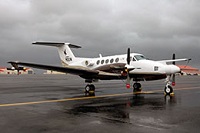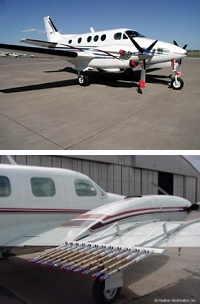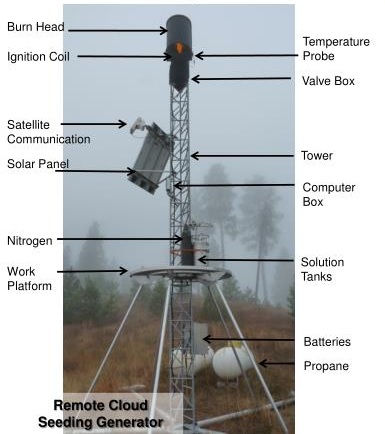
Instruments

DOWs
The Doppler-on-Wheels (DOW) mobile radar platforms are the central and most versatile component of the Center for Severe Weather Research's (CSWR) weather observation capability. The DOWs are mobile, dual-frequency, dual-polarization, X-band radars capable of high-resolution radar returns in a variety of weather scenarios. The DOWs have observed tornadoes, hurricanes, snowstorms and even wildfires. The currently serve the NSF's Lower Atmospheric Observing Facility (LAOF) as its most requested resource.Both DOW6 and DOW7 will participate in SNOWIE - they will each be seated at the top of two seperate mountains near Cascade, ID. Here they will help observe the natural dynamical and microphysical processes by which wintertime orographic storms generate snow. Intensive observing periods (IOPs) will be coincident with the release of silver iodide (AgI) from both ground generators and aircraft into the storms. The dual-polarization capabilities of each DOW make them capable of detecting microphysical changes in clouds due to cloud seeding. For a review of dual-polarization weather radar, please refer to this review provided by NOAA's National Severe Storms Laboratory.

UW King Air
The University of Wyoming King Air (UWKA) is a modified Beechcraft King Air 200T twin-engine turbo-prop research aircraft fitted with a suite of weather observing instruments. The current aircraft has been in operation with the University of Wyoming since 1977 and has participated in numerous field projects throughout the world, including PECAN and OWLeS. In addition to measuring standard atmospheric parameters such as pressure, temperature, water vapor and wind, UWKA can measure a number of important cloud microphysical parameters such as liquid water content, condensed water content, and the size spectrum of the cloud droplets themselves. Additionally, the aircraft is fitted with the Wyoming Cloud Radar (WCR), a high-frequency W-band radar useful for studying cloud microphysics, and an experimental Ka-band profiling radar useful for observing precipitation. The aircraft is also equipped with a downward-pointing lidar which can help identify layers of aerosol.During SNOWIE, IOPs will be primarily centered around UWKA flights and will be coincident with the release of silver iodide by a separate aircraft, or by ground-based generators. The aircraft will be based out of Boise, and will operate for approximately 4 hours in a pre-determined flight pattern designed to sample the silver iodide plume with the greatest precision. Flight tracks for the UWKA will be near to the DOW sites, and the DOW scan strategies will be adjusted to match the UWKA flight track.

IPC/WMI Cloud Seeding Aircraft
The cloud seeding aircraft that will be used during SNOWIE are Beechcraft King Air C90's owned by Weather Modification, Inc. (WMI) and operated by the Idaho Power Company (IPC). The aircraft are specially fitted with a number of flares that detach from the wing of the aircraft and release silver iodide into a developing storm. During an IOP, the aircraft will release silver iodide flares for approximately 2 hours at a level 1000 feet above the flight track of the UWKA. The UWKA will then fly through the silver iodide plume, directly observing the enhancement of the snowstorm.